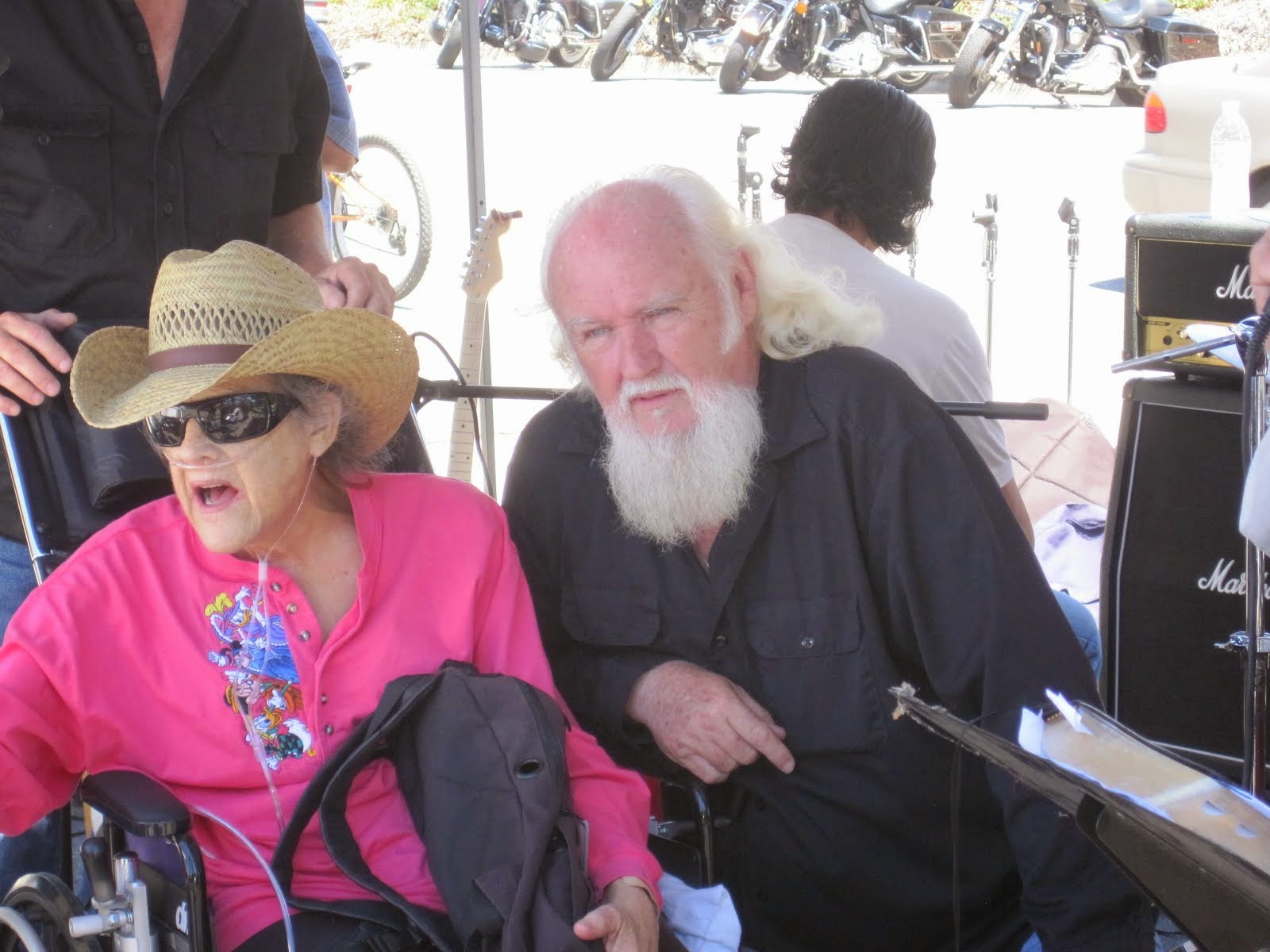OFF THE WIRE
Doug Wyllie
Editor in Chief Doug Wyllie by clicking here.
Investigations increasingly involve evidence left
in the cyber world, and the joint project with DigitalStakeout takes
another step in that direction.....
Social media has become as much of an investigative tool for police
as it is an “outlet” for people to tell the web-connected world about
every moment of their angst-ridden lives.
Just this week, we reported on South Carolina investigators who identified their murder suspect
by delving into messages sent to and from the victim’s social media
accounts. Last week, we had news of this wanted (and perhaps
intellectually challenged) individual who taunted the local cops “catch
me if you can,” only to be placed in custody within the hour.
As amusing as those examples may be, they barely scratch the surface
of how police investigators can use social media to solve crimes. A
newly announced partnership between LexisNexis and a Georgia-based company called DigitalStakeout is illustrative of just how deep into the social media waters police can now dive.
Across the Social Universe
Back in October 2013, LexisNexis announced expanded capabilities to its Accurint for Law Enforcement
product through which agencies can “unlock the value of big data from
social media, providing the ability to discover risks, threats and gain
actionable intelligence.”
The new offering, appropriately named Social Media Monitor, taps into
the cloud-based software developed by DigitalStakeout to retroactively
replay — and in some cases, watch live — a host of social media outlets
like Facebook, Twitter, Google+, YouTube and Instagram.
During my attendance at IACP 2013 in Philadelphia — a week or so
after the solution was announced — I visited with Bill Hatfield, who
serves as Manager of Federal Government Consulting for LexisNexis, and
Adam Mikrut, Founder and Chief Technology Officer of
DigitalStakeout. Together, they give me a brief demonstration at the
LexisNexis booth on the trade show floor. He explained that the tool has
both investigative (backward-looking) and preventative
(forward-looking) capabilities, and that because of differences in the
user agreements of each unique social media service, those two different
uses of the Social Media Monitor product will provide access to a
different spectrum of data.
One site may allow for “live feed” directly into the solution,
whereas another may not. Further, companies like Facebook, Twitter and
others may at any time end up changing those user agreements, so the
exact universe of available data sources is a bit like, well, the actual
universe.
That is to say, it’s ever-changing. Regardless, the basic use cases
(looking back or looking ahead) aren’t likely to vary until LexisNexis
and DigitalStakeout intentionally change them.
Looking Back or Looking Ahead
In the case of a detective looking for possible suspects after a crime
has been committed, the estimated time and location of the offense can
be placed on a digital map, and up will appear the tweets, posts,
pictures and videos of people within a specified radius.
Immediately that detective will have a pool of potential witness, and
possibly even a social media post containing evidence of the actual act
in progress.
In the instance of watching for criminal activity in real time (or
even a “Minority Report” mode of seeing indicators of future crimes in
the making), you’d have someone at a workstation with a similar map
displayed.
In this type of scenario, there might be two areas in which rival
gangs are known to operate. The officer can draw virtual lines on a map
around each, and tell the software to watch for posts/tweets containing
specific keywords (think: “payback” or “turf”) or names/terms specific
to those two rival gangs.
When such a word shows up on one of the social media platforms the
service monitors, the map would indicate the precise location of that
Tweet or post — assuming the phone or device from which that message is
sent is a geo-enabled device.
Either way, from what I saw at IACP, the user interface is intuitive —
I got the idea in two minutes of watching the demo — and the potential
for its crime-fighting value obvious.
Watching from the Cloud
As I took in the presentation late last year, one of the obvious selling
points for the solution that occurred to me is that it’s not a
stand-alone product. It’s an add-on to the suite of LexisNexis software
services already in use by law enforcement agencies across the country.
Because it’s cloud-based — known also as Software-as-a-Service (or
SaaS) — an existing Accurint customer has little more to do than learn
the software. The folks at LexisNexis / DigitalStakeout do all the
installation stuff on their end.
According to LexisNexis, “four out of five” in a survey of about
1,200 cops already “utilize social media sites to help with
investigations, and three of four non-users intend to begin using social
media for investigations this year.”
There’s no denying that the future of investigations will
increasingly involve digital evidence left (and then found) in the cyber
world, and this solution is yet another step in that direction.
skip to main |
skip to sidebar




Bill & Annie

Art Hall & Rusty


NUFF SAID.......


































































OOHRAH

ONCE A MARINE,ALWAYS A MARINE

GIVING BACK


MOUNT SOLEDAD














BIKINI BIKE WASH AT SWEETWATER










FRIENDS





BILL,WILLIE G, PHILIP










GOOD FRIENDS


hanging out

brothers


GOOD FRIENDS

Good Friends

Hanging Out




Bill & Annie
Art Hall & Rusty
Art Hall & Rusty


NUFF SAID.......



















NUFF SAID......



























Mount Soledad




BALBOA NAVAL HOSPITAL
RUSTY DANNY

ANNIE KO PHILIP

PHILIP & ANNIE

OUT & ABOUT

OOHRAH...

OOHRAH
ONCE A MARINE,ALWAYS A MARINE

ONCE A MARINE,ALWAYS A MARINE
American Soldier Network GIVING BACK

GIVING BACK
CATHY & BILL
PHILIP & DANNY & BILL

MOUNT SOLEDAD
bills today
EMILIO & PHILIP
WATER & POWER
WATER & POWER
bootride2013



BIKINI BIKE WASH AT SWEETWATER







ILLUSION OPEN HOUSE

FRIENDS


GOOD FRIENDS



BILL,WILLIE G, PHILIP









GOOD FRIENDS

GOOD FRIENDS
Friends
- http://www.ehlinelaw.com/losangeles-motorcycleaccidentattorneys/
- Scotty westcoast-tbars.com
- Ashby C. Sorensen
- americansoldiernetwork.org
- blogtalkradio.com/hermis-live
- davidlabrava.com
- emiliorivera.com/
- http://kandymankustompaint.com
- http://pipelinept.com/
- http://womenmotorcyclist.com
- http://www.ehlinelaw.com
- https://ammo.com/
- SAN DIEGO CUSTOMS
- www.biggshd.com
- www.bighousecrew.net
- www.bikersinformationguide.com
- www.boltofca.org
- www.boltusa.org
- www.espinozasleather.com
- www.illusionmotorcycles.com
- www.kennedyscollateral.com
- www.kennedyscustomcycles.com
- www.listerinsurance.com
- www.sweetwaterharley.com

Hanging out

hanging out
Good Friends

brothers
GOOD FRIENDS

EMILIO & SCREWDRIVER

GOOD FRIENDS
Danny Trejo & Screwdriver

Good Friends
Navigation
Welcome to Bikers of America, Know Your Rights!
“THE BIKERS OF AMERICA, THE PHIL and BILL SHOW”,
A HARDCORE BIKER RIGHTS SHOW THAT HITS LIKE A BORED AND STROKED BIG TWIN!
ON LIVE TUESDAY'S & THURDAY'S AT 6 PM P.S.T.
9 PM E.S.T.
CATCH LIVE AND ARCHIVED SHOWS
FREE OF CHARGE AT...
BlogTalkRadio.com/BikersOfAmerica.
Two ways to listen on Tuesday & Thursday
1. Call in number - (347) 826-7753 ...
Listen live right from your phone!
2. Stream us live on your computer: http://www.blogtalkradio.com/bikersofamerica.
A HARDCORE BIKER RIGHTS SHOW THAT HITS LIKE A BORED AND STROKED BIG TWIN!
ON LIVE TUESDAY'S & THURDAY'S AT 6 PM P.S.T.
9 PM E.S.T.
CATCH LIVE AND ARCHIVED SHOWS
FREE OF CHARGE AT...
BlogTalkRadio.com/BikersOfAmerica.
Two ways to listen on Tuesday & Thursday
1. Call in number - (347) 826-7753 ...
Listen live right from your phone!
2. Stream us live on your computer: http://www.blogtalkradio.com/bikersofamerica.
Good Times
Hanging Out

Key Words
- about (3)
- contact (1)
- TENNESSEE AND THUNDER ON THE MOUNTAIN (1)
- thinking (1)
- upcoming shows (2)
Blog Archive
-
▼
2014
(1640)
-
▼
March
(294)
- USA - Spring is here. More of us are out riding. S...
- BABE OF THE WEEK, MANDI
- CA - Mongols rally against federal lawsuit targeti...
- CA - Saving The Patch With Beer
- Recommended reading, it might help to refresh ever...
- USA - The Republic’s End Times?
- Remember, Always...NEVER FORGET....
- Special bulletin from Spike! The Order of Constitu...
- SLAVE IN MODERN AMERICA
- USA - In 'Domain Awareness,' Detractors See Anothe...
- BABE OF THE DAY
- USA - Roads To Justice
- LAPD Cop Investigation -- Come Sit On My Bike and ...
- "Micro Chip Implant" - SHARE THIS AS MUCH AS YOU CAN.
- CALIFORNIA - Feinstein: All vets are mentally ill ...
- USA - Does Second Amendment Secure Citizen’s Right...
- REPOSTING BY REQUEST - The Arming Of The American ...
- USA - As Police Monitor Social Media, Legal Lines ...
- USA - Secret Govt. Denies US Citizens FOIA Requests
- B.A.D. Biker Rights Gets Its BUZZ On With BADAlert!
- How Many Times Should You Shoot?
- USA - SLAVE IN MODERN AMERICA....
- USA - Americans Oppose the Obama-Boehner Ammesty Plan
- WORLDWIDE - Save The Patch
- USA - Generals Say Troops Understand Need for Pay ...
- BABE OF THE DAY
- The Cold Steel Brooklyn Smasher: A Self-Defense Ho...
- TN Motorcycle Helmet Law Debate
- RIP`S BAD RIDE, 6 - 22 - 2014
- Save the Date: Sunday, April 13, 2014 - Cancer Ben...
- USA - Barack Obama is the only president who has f...
- Calif. police hop on social media.....New tools tu...
- Eavesdropping Law in Illinois Put on Its Head...
- USA - Government Seeks To Silence Free Media Sources
- BABE OF THE DAY
- [Watch] Cop Pulls Gun on Regular Guy, Gets Gun Tak...
- BABE OF THE DAY
- Motorcycle Hand Signals. Do You Know Them All?
- Sounds pretty accurate.
- Obama Kills Tomahawk, Hellfire Missile Programs
- Australia - Newman's anti-bikie laws tested again ...
- JOKE OF THE DAY..The ANT AND THE GRASSHOPPER,TWO D...
- CA - MMA-CA MOTORCYCLE RIGHTS TASK FORCE TRAFFIC ...
- HUMP DAY BABE OF THE DAY
- - Judge Rejects Warrant Application, Because He Th...
- BIKER BINGO RUN 2014
- Obama's hidden agenda: More than just your guns
- Toy drone reaches South Pole
- USA - Homeland Security Exercise Targets “Free Ame...
- The following information is from the CA DMV
- JOKE OF THE DAY.............
- USA - 19 states that have upheld police cell phone...
- Biker Civics 101
- USA - BREAKING NEWS on Drones
- USA - Politics Counts: Marijuana Debate Goes Mains...
- Federal Judge Denies Search Warrant
- CA - Los Angeles Cops Argue All Cars in LA Are Und...
- USA - Brushfires of Freedom
- 2014 AMA Vintage Motorcycle Days
- WASHINGTON - Clarification: Media Shield Law story
- OUR FOUNDING FATHERS WOULD HAVE RISEN UP WELL BEFO...
- USA - Why SCOTUS won't issue a sweeping police cel...
- USA - What YOU need to know about Real ID..WORTH T...
- CA - 'Don't Talk to a Lawyer,' LAPD Says
- Michigan Department of State Police v. Sitz CERTIO...
- Sobriety checkpoints are permissible under the Fed...
- USA - Vets Among Americans Suing Over Fed's No-fly...
- DONT TALK TO COPS says NYPD Detective
- BABE OF THE DAY
- Police State Recruiting Minors
- ABATE OF NEW YORK, FREEDOM RIDE TO THE CAPITAL...
- THINK PEOPLE........... Help our veterans!!!
- USA - New LexisNexis service keeps tabs on social ...
- CA - Dianne Feinstein pushes for semi-automatic ri...
- BABE OF THE DAY
- ATF Jumped the Gun on Silencer Designation
- King City - California Cops Arrested Over Impoundi...
- Thanks to this man, Illinois has no motorcycle hel...
- VOP-FreedomMedia's "Lakota Nation Speaks"
- USA - Citizen Outlaws – WELCOME HOME!
- Police target building defects in new ploy to boot...
- The Department Of Homeland Security Recently Purch...
- BABE OF THE DAY
- CA - Wanna go for a ride to support a great cause?...
- BEST EMAIL IN A WHILE
- USA - New Drones Can Steal Information Straight Fr...
- AUSTRALIA - Queensland anti-bikie laws: Motorcycl...
- BABE OF THE DAY
- USA - Long-delayed marijuana for PTSD study closer...
- Congressional Reform Act of 2012
- RECEIVED THIS IN AN EMAIL, CHECK IT OUT..ONLY IN A...
- CA - Democrats Call for Marijuana Legalization Whi...
- Do We Need To Toughen Distracted Driving Laws?
- BABE OF THE DAY
- USA - Fred Phelps: no funeral for the preacher who...
- Founder of Bikers Against Discrimination bares his...
- ANOTHHER GOOD 1 CHECK IT OUT..........Sidecar Dogs
- SAVE THE PATCH EVENT; EVERYONE WHO CAN, PLEASE ATT...
- AUSTRALIA - Bikie heads to High Court over Qld laws
- Ga. Congressman says VA secretary should be fired ...
-
▼
March
(294)
Bikers of America, Know Your Rights!... Brought to you by Phil and Bill
Philip, a.k.a Screwdriver, is a proud member of Bikers of Lesser Tolerance, and the Left Coast Rep
of B.A.D (Bikers Against Discrimination) along with Bill is a biker rights activist and also a B.A.D Rep, as well, owner of Kennedy's Custom Cycles
